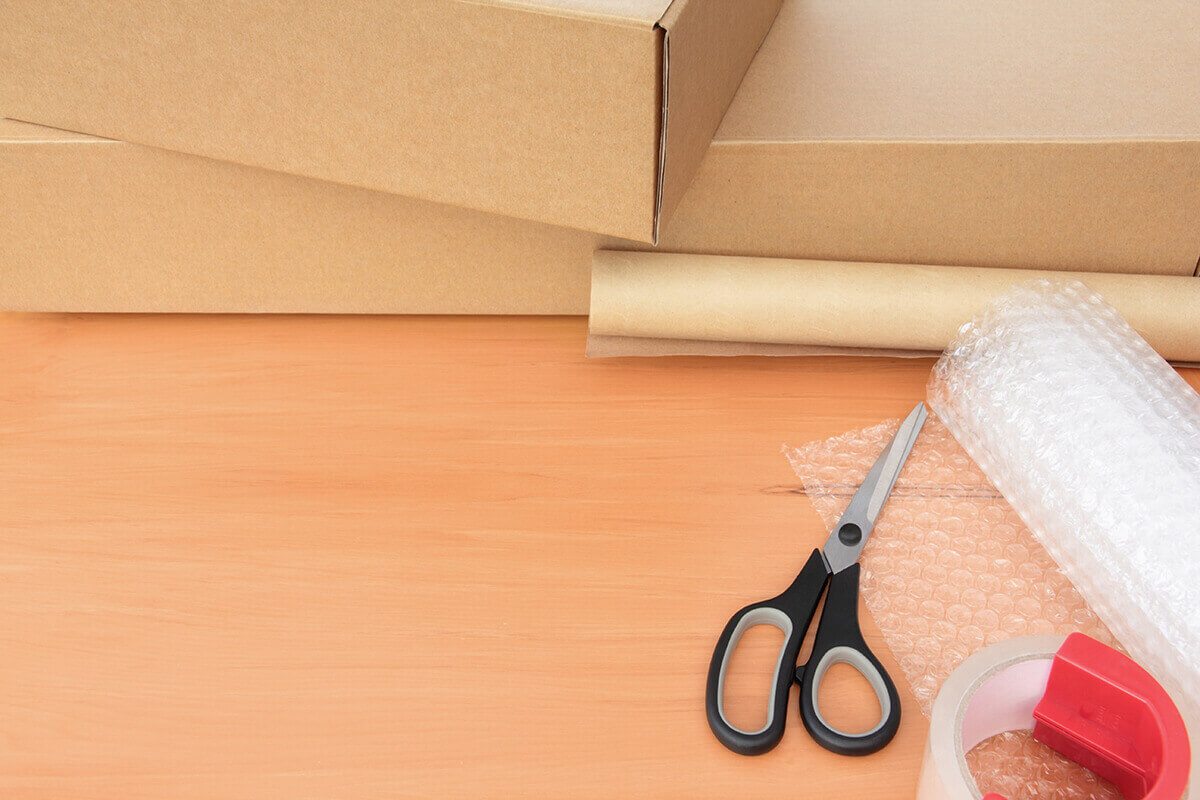Compile a detailed list of comforters before relocating. Evaluate which ones are worth carrying to your future abode. Calculate the packing materials required for boxing everything up. Before placing them in boxes, ensure quilts are clean, dry, and neatly folded, and consider using vacuum-sealed bags for efficient packing. Seal crates securely and label them clearly. If the process seems daunting, hiring a long-distance moving company is a viable option.
How to Pack Blankets for Moving
Moving homes is a task that requires meticulous planning and care. Among the various items we need to transfer, blankets can be deceptively challenging. You want them to arrive in the same cozy and pristine condition as they were packed. So, how to pack blankets for moving efficiently and securely? The answer lies in a combination of technique and material choice. Dive into our guide to ensure your blankets make the journey unscathed.


Make an Inventory List of Your Possessions
Comforters can be bulky and represent a significant investment in terms of cost and sentimental value. By noting them down in an inventory list, you can have an efficient packing process, ensure none are misplaced during transit, and streamline the unpacking process after the relocation.
Sort Through Your Blankets and Decide Which Ones to Take With You
Before moving cross country, take a moment to assess your collection of comforters. Lay them out and evaluate each one based on their condition, sentimental value, utility, and possibly a different climate at your future destination.
Consider factors like the frequency of use and whether they fit the decor of your new place. By downsizing your collection, you can make informed decisions about which comforters to pack and which ones might be better left behind.
Follow the video below for some no-mess decluttering tips.
Consider Donating or Storing Blankets You Won’t Need Immediately
When assessing your household items, particularly quilts, it’s important to ponder their immediate utility. Quilts, cherished for their craftsmanship or sentimental value, might not always be crucial for daily use. If you don’t require them in the near future, consider multiple avenues.
Donating unwanted items to charity can offer warmth and beauty to someone in need, especially if they’re in good condition. On the other hand, booking a storage unit as a part of the cross-country moving service package ensures they’re preserved in climate-controlled facilities until you are ready to receive them.
However, if you’re relocating on a budget and want to save some money for your relocation, selling quilts can also be a smart move. Those in good condition can fetch a reasonable price, either through garage sales or online platforms like Craigslist, eBay, or Facebook Marketplace.
Estimate the Quantity of Packing Materials Required Based on Your Collection
When planning a relocation, it’s imperative to accurately gauge the amount of packing materials you’ll need, especially to avoid last-minute relocation scrambles or wastage. Based on the number, size, and delicacy of your items, determine the number of protective supplies you’ll require. It’s always wise to procure a slight surplus to account for unexpected needs. Proper estimation not only ensures the safety of your belongings but also leads to a cost-effective and efficient relocation.


Gather a Variety of Packing Supplies
If you wish to have a streamlined boxing-up experience, try to gather all these different packing materials mentioned in the list below:
- Boxes – cardboard crates in a variety of sizes,
- Bubble wrap – for delicate or valuable quilts that need an extra layer of protection,
- Duct tape – strong adhesive tape to seal the boxes securely,
- Clean paper – to wrap your possessions that might be susceptible to dust or stains,
- Permanent markers – for labeling boxes with contents and the room they belong to,
- Eco-friendly options – reusable containers such as plastic storage totes, which can be used multiple times,
- Cloth bags – cotton or canvas bags to store and relocate your collection,
- Vacuum-sealing bags – these are useful for reducing the volume of large quilts,
- Old sheets or pillowcases – as a creative storage idea for safeguarding and wrapping your quilts,
- Stretch plastic wrap – to wrap and secure rolled comforters, especially if they are being stored for extended periods,
- Labels or stickers – for easy identification. This is especially helpful if you have different blankets for different seasons or rooms,
- Desiccant packs – if you’re storing blankets in humid areas, these can help absorb moisture and prevent mold.
Clean and Prepare the Blankets for the Move
Before embarking on the move, it’s crucial to ensure your comforters are in the best possible condition. Begin by washing and drying them thoroughly, guaranteeing they are both clean and fresh when unpacked at the new location.
As you wrap each blanket, employ the KonMari folding method to do so neatly and consistently, reducing the chance of wrinkles and maximizing space efficiency. For an added layer of protection and a clever way to save space, consider storing the blankets in vacuum-sealed bags.


How to Pack Blankets for Moving – A Step-by-Step Guide
Following each step meticulously when boxing up your collection is paramount for several reasons. Each procedure is designed with the item’s safety, preservation, and ease of transfer in mind. Neglecting even one step could compromise the condition or safety of your belongings. Thus, each phase is integral to ensuring the successful and damage-free relocation of your comforters.
Moving
Our mission is to bring high quality, long distance moving services to every customer.
Packing
Our expert moving teams are trained to ensure the safety of your personal belongings.

Storage
Cross Country Moving Company is the most trusted name in auto industry in the country.
Packing Blankets in Boxes
Start by laying down a protective layer of either bubble wrap or packing paper at the base of the box. This layer serves as cushioning, safeguarding the quilts from any potential impact or rough handling.
Once the foundation is set, begin stacking your neatly folded quilts inside while adding protective layers between them to prevent moving. It’s essential to ensure they fit comfortably within the crate, snug enough to prevent excessive movement but not so tight that it compresses or damages the comforters.
Seal and Label the Boxes
This step not only saves time but also brings order to the relocation chaos. Utilize sturdy duct tape to firmly seal each box, ensuring they remain closed and protected throughout the transit. For clarity during unpacking, label each box with “Blankets” and provide a concise description of the packed items.
To further streamline the unpacking process, consider implementing a color-coded system. By using differently colored labels or markers, you can easily indicate which room the quilts should be placed in upon arrival at the new location.


Hire a Cross-Country Moving Company to Handle This Task for You
When faced with the daunting task of relocating, it’s often wise to hire cross-country movers to shoulder the burden. Cross Country Moving Company specializes in navigating the complexities of long-distance relocations. Beyond just shipping your belongings, we offer long-distance moving services that encompass a broad range of tasks, from planning and coordination to loading and unloading your goods.
The added relocation benefits are our packing services, where our seasoned professionals utilize the best industry practices to store your items, ensuring they’re protected throughout the journey. By entrusting this task to our expert crew, you can alleviate the stress of the move, confident in the knowledge that your possessions are in capable hands.


Your Blankets Will Keep You Safe and Warm Even in Your New Home
With the Cross Country Moving Company at the helm, relocating becomes less about the miles and more about the memories. Our top-tier long-distance movers will ensure that, amidst all the hustle and boxes, your beloved quilts are treated with care. After all, even in a brand-new home, it’s these comforters that promise to keep you “wormed up.” Don’t hesitate to contact us today for a seamless transition filled with comfort and expertise brought to you by one of the top cross-country moving companies.
FAQ
Why Do I Need to Pack Blankets Carefully for a Move?
Quilts, whether decorative or functional, are investments in comfort and aesthetics. Storing them with care ensures they remain in pristine condition. Improper packing can expose them to dirt, sharp objects, or moisture, leading to potential stains, tears, or mildew growth. Besides, a well-packed blanket is less likely to get tangled or compressed, ensuring they come out of the move just as fluffy and cozy as before.
Can I Pack Blankets With Other Items in the Same Box?
Yes, you can, but with discretion. Combining comforters with soft items like clothing or stuffed toys can save space. However, avoid boxing them up with items that have sharp edges or are too heavy. These can damage or compress the fabric, affecting the items’ shape and texture.
How Can I Keep My Blankets Fresh During Storage After the Move?
To maintain the fresh smell and feel, start by ensuring your comforters are clean and completely dry before storing them. Lavender sachets or cedar balls are natural deterrents for pests and add a pleasant scent. Furthermore, consider using breathable fabric storage bags that allow air circulation, ensuring that the quilts don’t develop a musty smell over time.
Should I Use Plastic Bags to Pack Blankets?
While plastic bags might seem convenient, they can trap moisture, especially in humid environments, leading to mold or mildew. If you opt for plastic, vacuum-sealed bags are preferable as they remove air and significantly reduce the risk of moisture retention. These bags also have the added benefit of saving space.
Can I Reuse the Packing Materials for Other Purposes After the Move?
Definitely! Quality supplies are versatile. Bubble wrap and clean paper can serve as insulation or cushioning for future shipments or as protective layers for fragile items during storage. Cardboard boxes can be flattened and stored for future needs or transformed into creative DIY projects for the home or kids.
What Is the Best Way to Pack Blankets With Delicate Embroidery or Embellishments?
Delicate embroidery and embellishments require special attention. First, gently fold the quilt so the embroidery is inside, protecting it from snags. Acid-free tissue paper can be used to wrap the item, offering an additional layer of protection. This paper prevents color transfer and shields delicate parts from abrasion.
Are There Any Eco-Friendly Packing Alternatives for Blankets?
There are several eco-friendly alternatives for boxing up your quilts, like reusable cloth bags or recycled cardboard crates. Using biodegradable packing peanuts or repurposed paper can also offer cushioning without environmental harm. These sustainable options reduce waste and make relocations more environmentally conscious.
Can I Use Old Blankets as Additional Padding for Fragile Items During the Move?
Indeed, old or less valuable comforters make for excellent padding. They can be wrapped around vases, electronics, or any fragile items to cushion them against shocks. This not only protects your breakables but also repurposed items, cutting down on additional packaging supplies.
Should I Use Plastic Bins or Cardboard Boxes for Packing Blankets?
Both options have their merits. Plastic bins are waterproof and more durable, making them excellent for long-term storage or moves during rainy seasons. Cardboard boxes are biodegradable, lighter, and often easier to source. Ensure that whatever you choose is clean, dry, and free from pests.
How Do I Prevent Mold or Mildew on Blankets During Storage?
Prevention begins with storing only completely dry comforters. Even slight dampness can lead to mold in confined spaces. Using desiccant packs within the storage box or bin helps absorb any residual moisture. Ensure the storage area is cool, dry, and well-ventilated. Periodically inspect stored blankets, airing them out to refresh them and check for any signs of mold or pests.








